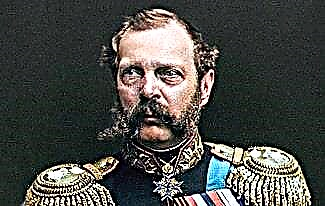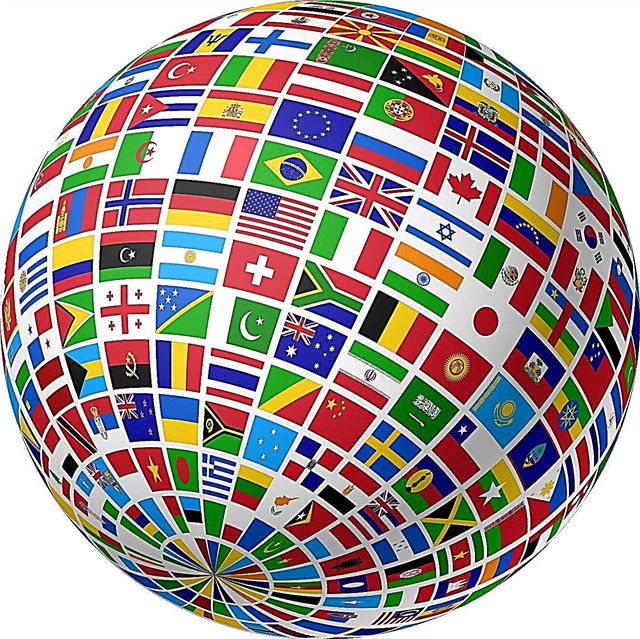At the beginning of the 18th century, Russia completed its “meet the sun” movement. The most important role in the design of the eastern borders of the state was played by two expeditions led by Vitus Bering (1681 - 1741). The talented naval officer proved himself not only as a capable captain, but also as an excellent organizer and supplier. The achievements of the two expeditions became a real breakthrough in the exploration of Siberia and the Far East and brought the Danish native the glory of the great Russian navigator.

1. In honor of Bering, not only the Commander Islands, the sea, a cape, a settlement, a strait, a glacier and an island are named, but also a huge biogeographic region. Beringia includes the eastern part of Siberia, Kamchatka, Alaska and numerous islands.
2. The famous Danish watch brand is also named after Vitus Bering.
3. Vitus Bering was born, raised in Denmark, received a naval education in Holland, but served, with the exception of a few teenage years, in the Russian Navy.
4. Like many foreigners in the Russian service, Bering came from a noble but ruined family.
5. For eight years, Bering slipped into the ranks of all four captain's ranks that existed then in the Russian fleet. True, in order to become a captain of the 1st rank, he had to submit a letter of resignation.
6. The first Kamchatka expedition was the first expedition in the history of Russia, which had exclusively scientific goals: to explore and map the sea shores and discover the strait between Eurasia and America. Prior to that, all geographical research was carried out as a secondary part of the campaigns.
7. Bering was not the initiator of the First Expedition. She was ordered to equip and send Peter I. Bering was offered to the leaders in the Admiralty, the emperor did not mind. He wrote the instructions to Bering with his own hand.
8. It would be more appropriate to call the Bering Strait the Semyon Dezhnev Strait, who discovered it in the 17th century. However, Dezhnev's report got stuck in the bureaucratic millstones and was found only after Bering's expeditions.

9. The sea part of the First Expedition (crossing from Kamchatka to the Bering Strait, sailing in the Arctic Ocean and back) lasted 85 days. And in order to get by land from St. Petersburg to Okhotsk, Bering and his team took 2.5 years. But a detailed map of the route from the European part of Russia to Siberia was compiled with a description of roads and settlements.
10. The expedition was very successful. The map of the seashores and islands compiled by Bering and his subordinates was very accurate. It was generally the first map of the North Pacific Ocean drawn by Europeans. It was republished in Paris and London.
11. In those days, Kamchatka was extremely poorly explored. In order to reach the Pacific Ocean, the expedition's cargoes were transported by dogs overland across the entire peninsula over a distance of more than 800 kilometers. To the southern tip of Kamchatka from the place of transfer there were some 200 km, which could well be covered by sea.
12. The second expedition was entirely Bering's initiative. He developed its plan, controlled supply and dealt with personnel issues - more than 500 specialists were provided for.
13. Bering was distinguished by fanatical honesty. Such a feature was not to the liking of the authorities in Siberia, who hoped to make a good profit during the supply of such a large expedition. That is why Bering had to spend time refuting the denunciations he received and controlling the entire process of supplies for his wards.

14. The second expedition was more ambitious. Her plan to explore Kamchatka, Japan, the shores of the Arctic Ocean and the North American coast of the Pacific Ocean was called the Great Northern Expedition. Only the preparation of supplies for it took three years - each nail had to be transported across all of Russia.
15. The city of Petropavlovsk-Kamchatsky was founded during the Second Bering expedition. Before the expedition, there were no settlements in the Petropavlovsk Bay.
16. The results of the Second Expedition can be considered a disaster. Russian sailors reached America, but due to the depletion of supplies, they were forced to immediately turn back. The ships have lost each other. The ship, whose captain was A. Chirikov, although having lost part of the crew, managed to get to Kamchatka. But “Saint Peter”, on which Bering was traveling, crashed in the Aleutian Islands. Bering and most of the crew died of hunger and disease. Only 46 people returned from the expedition.

17. The second expedition was ruined by the decision to search for the non-existent Compania Islands, supposedly consisting of pure silver. Because of this, the ships of the expedition, instead of the 65th parallel, went along the 45th, which almost doubled their path to the American coast.

18. The weather also played a role in the failure of Bering and Chirikov - the whole voyage was covered with clouds and the sailors could not determine their coordinates.
19. Bering's wife was Swedish. Of the ten children born in wedlock, six died in infancy.
20. After the discovery of Bering's grave and the exhumation of the seaman's remains, it turned out that, contrary to popular belief, he did not die of scurvy - his teeth were intact.









